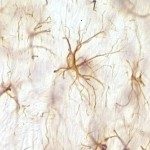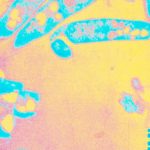Lien vers Pubmed [PMID] – 9237096
Immunotechnology 1997 Jun;3(2):117-25
BACKGROUND: The display of repertoires of antibody fragments on the surface of filamentous bacteriophages offers a new way of making antibodies with predefined binding specificities.
OBJECTIVES: Here we explored the use of this technology to find human antibodies with biological properties. Phage-scFv specific for crotoxin, the main toxic component of the venom of the South-American rattlesnake Crotalus durissus terrificus, were isolated from a ‘single pot’ repertoire of more than 10(8) clones made in vitro from human V gene segments [1]. The crotoxin molecule is composed of two noncovalently linked subunits: a basic and weakly toxic phospholipase A2 (PLA2) called component B (CB) and an acidic, nonenzymatic and nontoxic subunit called component A (CA). CA is able to increase the toxicity as well as the specificity of action of CB simultaneously reducing its enzymatic activity.
STUDY DESIGN: Two clones were isolated (4-21 and 5-3-1) which are specific of the basic subunit CB, but of a moderate affinity (about 10(-7) M). Clones 4-21 and 5-3-1 have different amino acid sequences and different effects on CB properties suggesting that they are raised against different CB epitopes. Purely cholinergic synaptosomes isolated from Torpedo electric organs provide a suitable model to study the presynaptic effects of crotoxin. In this model, CB was shown to induce a larger acetylcholine release than crotoxin.
RESULTS: A dose-dependent increase of acetylcholine release was observed when crotoxin was incubated with increasing amounts of phage-scFv 4-21. This clone was also shown to increase the enzymatic activity of crotoxin. These observations suggest that phage-scFv might dissociate the complex CA-CB. It could be therefore a neutralizing antibody since CB is much less toxic than crotoxin. This shows that ‘single pot’ libraries are capable of providing not only immunochemical reagents of high specificity but also biological reagents of high quality. The use of this library appears to open new possibilities for immune passive therapy.

